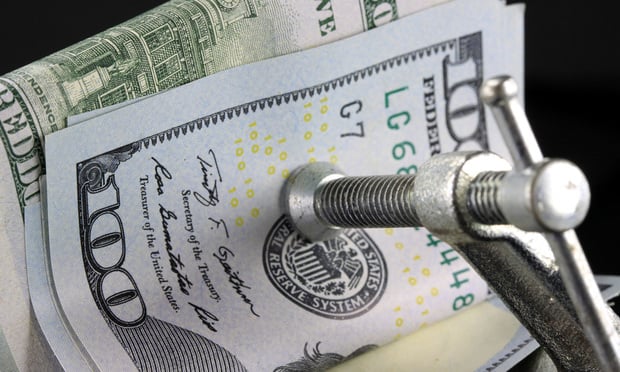WASHINGTON, DC—As many had expected, the US economy contracted .7% in Q1, according to the Bureau of Economic Affairs' second estimate of real gross domestic product released Friday morning. Last month BEA had reported an initial estimate of Q1 GDP of 0.2%.
In this second, more comprehensive estimate for the first quarter, BEA found that imports -- which are a subtraction in the calculation of GDP -- increased more and private inventory investment increased less than previously estimated.
"The decrease in real GDP in the first quarter primarily reflected negative contributions from exports, nonresidential fixed investment, and state and local government spending," according to the report.
These were partly offset by positive contributions from personal consumption expenditures (PCE), private inventory investment, and residential fixed investment, it said.
Whatever. The US economy likely slowed in the first quarter but there is genuine debate about whether BEA is accurately capturing economic activity in its measurements -- a possibility that the agency itself has raised.
"…BEA is aware of the potential for residual seasonality in GDP and its components, and the agency is looking for ways to minimize this phenomenon," it said in a recent blog post.
Briefly, residual seasonality refers to seasonal variations that don't have anything to do with economic activity but still can affect economic output. What the agency was saying in its blog post was that although it routinely adjusts its numbers for these variations, such as a bad winter, it is highly possible that it hasn't completely scrubbed these seasonal patterns out of its calculations.
BEA will be tweaking its formula for GPD with its initial second-quarter GDP estimate on July 30.
In the meantime, what is the industry to make of this latest data point that say the US economy contracted this year?
Some advisors are telling clients to remain calm, for all of the aforementioned reasons.
For example, Joe LaVorgna, chief US economist at Deutsche Bank, who actually predicted that GDP would contract by 1%, pointed to the BEA's seasonal adjustment procedures in a client note.
"There appears to be a problem with the BEA's seasonal adjustment procedures because the weakness in Q1 output has been persistent during this economic expansion," LaVorgna wrote in a note to clients on Thursday, according to an article in Business Insider.
Ethan Harris, economist at Bank of America Merrill Lynch, was more pointed in his observation (also via Business Insider). He wrote to clients: "We believe the 1Q GDP data greatly exaggerate the weakness in the economy and only a very selective reading of the data signals a significant recession risk…Looking ahead, it is much too soon to declare victory, but we expect the data to improve in the months ahead as seasonal and other distortions fade."
Or consider this recent report from the Federal Reserve Bank of San Francisco, which also has its doubts about the accuracy of current GDP calculations. "We conclude that there is a good chance that underlying economic growth so far this year was substantially stronger than reported."
None of this is to say all is rosy with the economy. In that same release, BEA also reported that US corporate profits dropped 8.7% during the period. Also, while unemployment continues to trend downward, there have been some months where the drop was less than expected.
In short, while there is genuine doubt about the GDP figures, there is little debate that something is askew with economic performance. Whether that is a temporary glitch or something more fundamental will become clearer in the months to come. BEA's GDP figures in July should reveal a lot.
© Touchpoint Markets, All Rights Reserved. Request academic re-use from www.copyright.com. All other uses, submit a request to [email protected]. For more inforrmation visit Asset & Logo Licensing.







